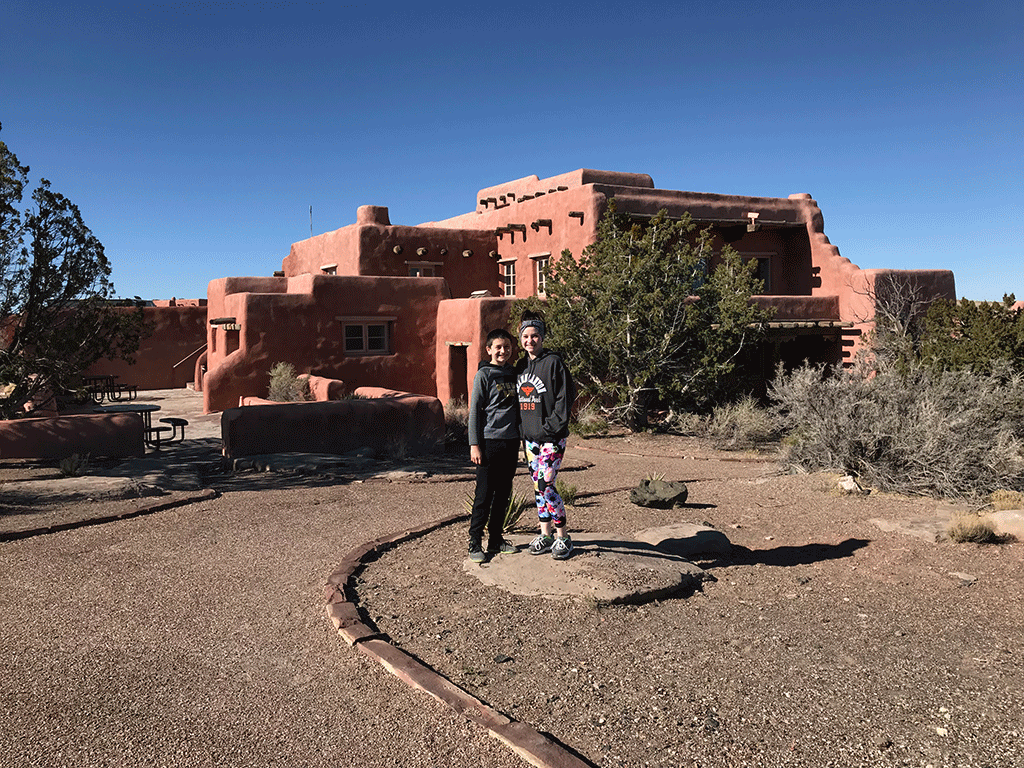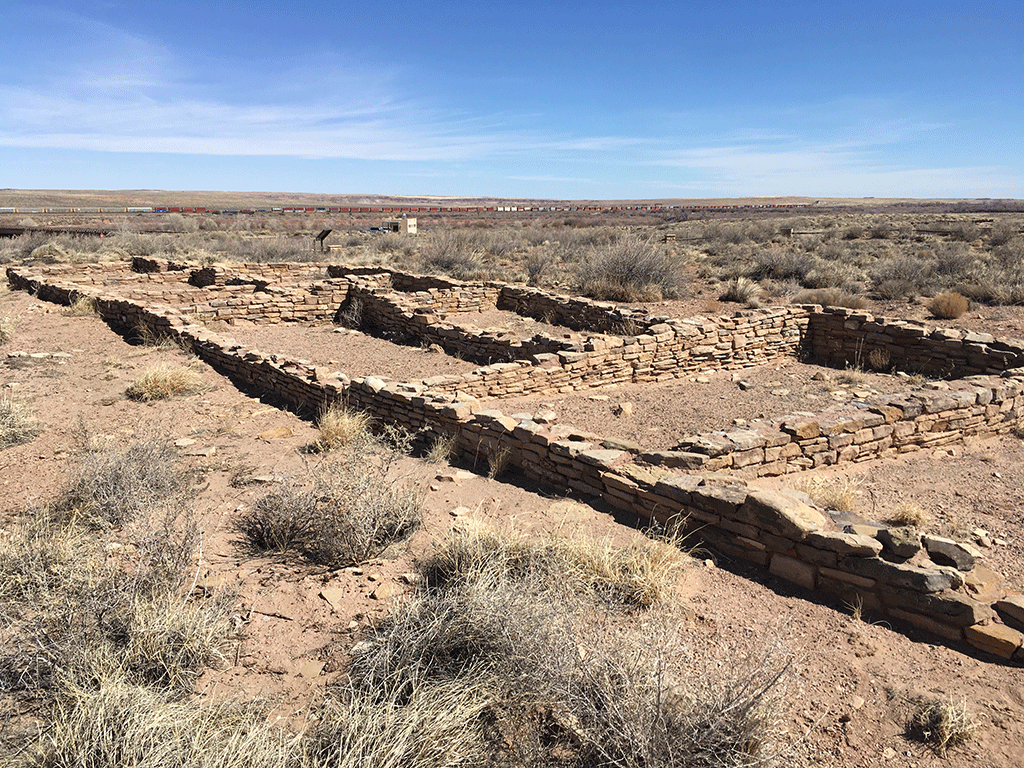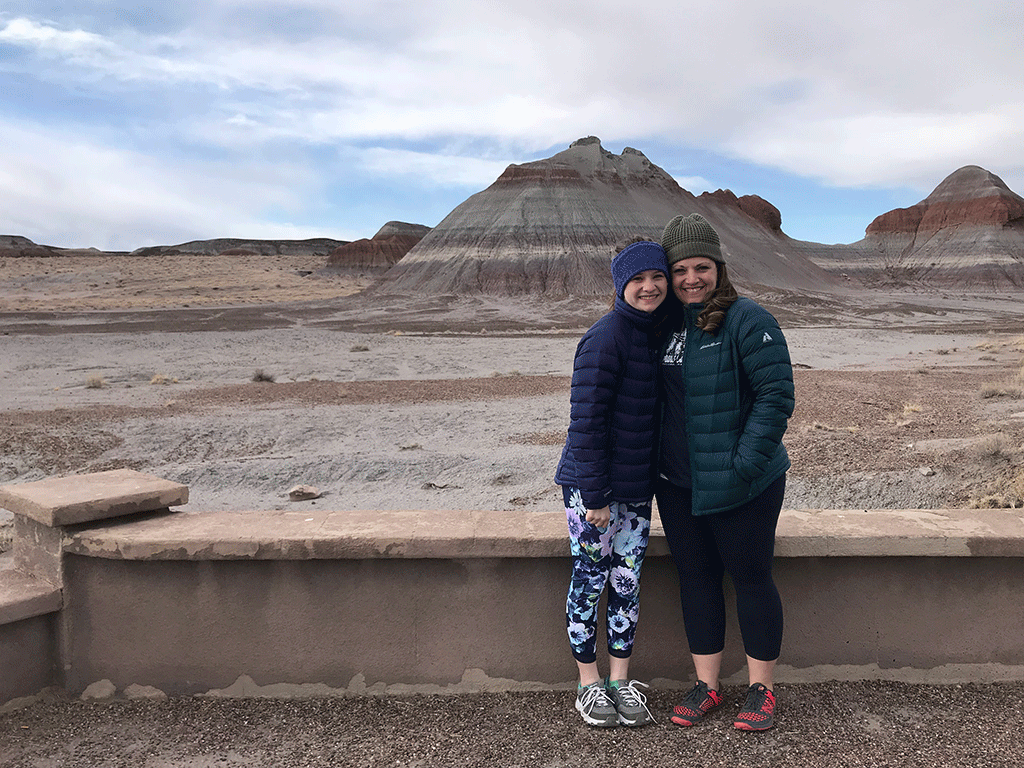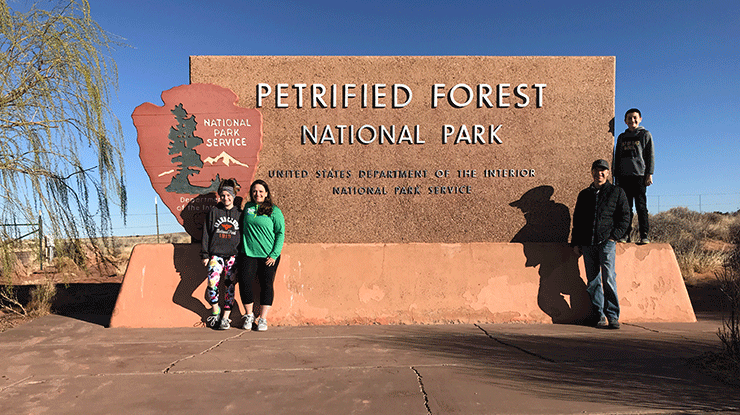We had just been at Grand Canyon National Park which was insanely crowded, so we were very happy to come to Petrified Forest National Park for some much smaller crowds. Petrified Forest is one of the smaller national parks in he United States. Most people overlook it, but it was actually way cooler than I thought it was going to be. This national park is a must see because of its uniqueness and factor of surprise. Because of its size, you can do the whole park in less than two days and still see everything the park has to offer. What’s really cool is that the park has two very different sides to it; the petrified side and painted desert side.
Things To Do
Fare warning, if your coming to Petrified Forest National Park, do not expect trees! The “forest” is one of the largest collections of petrified logs in the world, logs as in fallen trees.
On all of the trails, and even on the side of the road, you can see hundreds of thousands of logs of petrified wood. There are so many different trails you can walk along, some short and some longer, to see this colorful logs.
Crystal Forest
The solid logs at Crystal Forest used to be covered in beautiful shiny crystals, but since people have taken them in the past, there are not many crystals left. You can still catch a glimpse of the few that are left, but the trail does have some of the more colorful logs in the park.

Long Logs and Agate House
I really liked the Long Logs and Agate House trail for two reasons: These logs are the longest in the park and the house is pretty cool! The trail is pretty lengthy if you tack on Agate House, but it’s pretty flat and easy. The logs here are also SUPER colorful and we even some green in these ones which was awesome because we hadn’t seen any before then. I liked that we could also see some of the logs that hadn’t been all the way uncovered.
Agate House is a structure that someone built before the national park was created and was inhabited from 1100 to 1150. It’s very colorful and fun to explore. The window was not a part of the original design, but it lets you peak in the building.
Agate Bridge
Agate Bridge is a very short walk through a small old building to get to this sight. The bridge is one fallen petrified log that stayed together even though it goes over a mini canyon. A long time ago, the National Park Service put in concrete to keep it up, but it’s still cool to see.Plus, you can explore the mini canyon in the Agate Bridge area.
Lookouts and Points
There are a ton of different lookouts and points in the park that offer many unique views.
Jasper Forest Lookout
Jasper Forest is a sweat hike and you don’t need to do it when you visit the park because at the lookout, you can see everything you would see on the trail! Jasper Forest has one of the largest collections of wood in one spot which is cool to see.
Kachina, Pintado, and Tawa Points
There are many points along both of the drives in Petrified Forest National Park to stop at and see beautiful views of the desert, collections of petrified wood, and the flat top mountains. These points are quick pullouts on the side of the road, so no walking out to get to them, which makes it easy.
Painted Desert Inn
The Painted Desert Inn used to be a hotel, but now it’s a museum with an awesome lookout of the Painted Desert. It’s an adobe structure in the middle of the desert that’s a quick pit stop along your drive.

Puerco Pueblo
Puerco Pueblo translates to Pig Village in today’s language. No one actually knows what it means, but it’s a cool spot to check out. There’s a short trail to follow that takes you around what’s left of the ancient village and original petroglyphs. There’s one old one that resembles the solstice and you can only really see it at that time of year.

Blue Mesa
Blue Mesa was an unexpected change of scenery in Petrified Forest National Park and is a part of Painted Desert. The mountains appear in an abundance of colors with blue, purple, green, and many more colored stripes. There’s a lookout you can see the main section of and trail for Blue Mesa or you can hike it like we did. You get to go down into a valley-ish area and the mus mountains surround you, unlike all of the lookouts where you look towards or down upon them.
It’s amazing to see the colors up close, but the trail also offers unique views of the pedestal logs. The pedestal logs are petrified wood that sits on a pile of rock. The original land the log sat on eroded away, thus forming the spectacular pedestals.
The Teepees
Another must see stop is the Teepees. These are in the Painted Desert region of the park and they are more of the striped and colored mountains. This is a nice stop because it’s not a hike, but a pull out. You get an amazing view of the mountains and its colors.

Fun Facts About The Petrified Wood
There are so many interesting and awesome facts that many people don’t know about! These facts make the park seem a lot cooler of you’ve only heard about it.
- Ever wonder why the logs look like they were cut with a saw? They have silica in them! They are extremely hard (7.8 on the 1-10 scale), but weak and fragile, so the silica causes them to break at a clean angle.
The quartz within the petrified wood is hard and brittle, fracturing easily when subjected to stress. During the gradual uplifting of the Colorado Plateau, starting about 60 million years ago, the still buried petrified trees were under so much stress they broke like glass rods.
-National Park Service
- Want to know where all the colors are from? They represent the kinds of minerals found in the logs such as iron, quartz, carbon, manganese oxides, and sometimes chromium. These minerals give the logs all of their beautiful colors.
- The trees are geologically dated back to the Triassic Period; 218-225 million years old. THAT’S SUPER OLD! Some of the logs haven’t even been uncovered naturally yet, so they could even be a little older!
- How were the petrified logs formed? I don’t know how to explain this other that exactly what the National Park Service says! And they say:
Over 200 million years ago, the logs washed into an ancient river system and were buried quick enough and deep enough by massive amounts of sediment and debris that also carried in the water, that oxygen was cut off and decay slowed to a process that would now take centuries… Minerals, including silica dissolved from volcanic ash, absorbed into the porous wood over hundreds and thousands of years crystallized within the cellular structure, replacing the organic material as it broke down over time.
-National Park Service

There are so many more incredible things to learn about the park and its history and facts and you can visit the park to learn more! Petrified Forest was a perfect addition to our Spring Break road trip! Check out my video below for some more fun:
https://youtu.be/ZfrgiJB-gbo












Share Your Comments & Feedback: